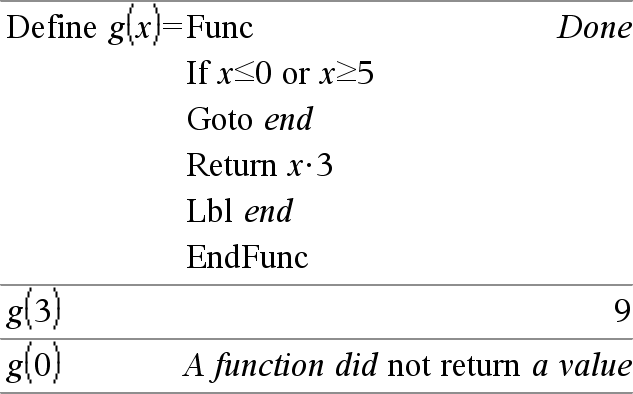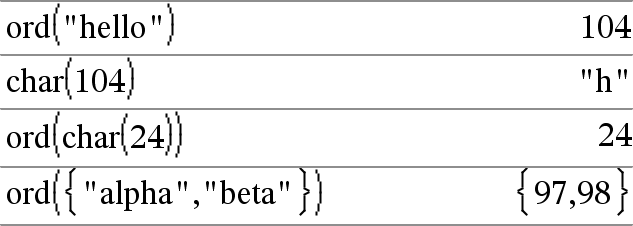|
Catalogue > |
|
|
OneVar [1,]X[,[Freq][,Category,Include]] OneVar [n,]X1,X2[X3[,…[,X20]]] Calculates 1-variable statistics on up to 20 lists. A summary of results is stored in the stat.results variable (here). All the lists must have equal dimension except for Include. Freq is an optional list of frequency values. Each element in Freq specifies the frequency of occurrence for each corresponding X and Y data point. The default value is 1. All elements must be integers | 0. Category is a list of numeric category codes for the corresponding X values. Include is a list of one or more of the category codes. Only those data items whose category code is included in this list are included in the calculation. An empty (void) element in any of the lists X, Freq or Category results in a void for the corresponding element of all those lists. An empty element in any of the lists X1 through X20 results in a void for the corresponding element of all those lists. For more information on empty elements, see here. |
|
|
Output variable |
Description |
|
stat.v |
Mean of x values |
|
stat.Gx |
Sum of x values |
|
stat.Gx2 |
Sum of x2 values |
|
stat.sx |
Sample standard deviation of x |
|
stat.sx |
Population standard deviation of x |
|
stat.n |
Number of data points |
|
stat.MinX |
Minimum of x values |
|
stat.Q1X |
1st Quartile of x |
|
stat.MedianX |
Median of x |
|
stat.Q3X |
3rd Quartile of x |
|
stat.MaxX |
Maximum of x values |
|
stat.SSX |
Sum of squares of deviations from the mean of x |
|
Catalogue > |
|
|
BooleanExpr1
BooleanList1
BooleanMatrix1
Returns true or false or a simplified form of the original entry. Returns true if either or both expressions simplify to true. Returns false only if both expressions evaluate to false. Note: See xor. Note for entering the example: For instructions on entering multi-line programme and function definitions, refer to the Calculator section of your product guidebook. |
|
|
Integer1 or Integer2Þinteger Compares two real integers bit-by-bit using an You can enter the integers in any number base. For a binary or hexadecimal entry, you must use the 0b or 0h prefix, respectively. Without a prefix, integers are treated as decimal (base 10). If you enter a decimal integer that is too large for a signed, 64-bit binary form, a symmetric modulo operation is used to bring the value into the appropriate range. For more information, see 4Base2, here. Note: See xor. |
In Hex base mode:
Important: Zero, not the letter O.
In Bin base mode:
Note: A binary entry can have up to 64 digits (not counting the 0b prefix). A hexadecimal entry can have up to 16 digits. |
|
Catalogue > |
|
|
ord(String)Þinteger ord(List1)Þlist Returns the numeric code of the first character in character string String, or a list of the first characters of each list element. |
|




